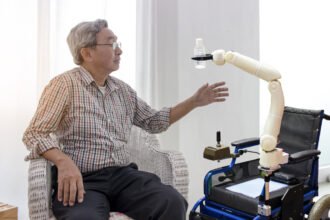Eric Dishman, Intel’s health visionary (and the protagonist of my “patient” chapter in the Numerati), delivered this talk at Ted in late ’09. His point is that the “hospital” model of health care is not only ineffective, but also unaffordable. The only viable solution for health care, it seems, is to manage health before people get sick. This takes place in the home, and it involves electronic surveillance.
Eric Dishman, Intel’s health visionary (and the protagonist of my “patient” chapter in the Numerati), delivered this talk at Ted in late ’09. His point is that the “hospital” model of health care is not only ineffective, but also unaffordable. The only viable solution for health care, it seems, is to manage health before people get sick. This takes place in the home, and it involves electronic surveillance.
I know this sounds invasive, even demeaning. The patterns of our lives–when we go to bed, how often we walk into the kitchen, even how we distribute our weight as we wash the dishes–will be subject to statistical analysis. But how much privacy and dignity do we have in hospitals, even while we’re paying thousands of dollars a day to stay there? What’s more, technology itself can provide some privacy relief. At a senior center in Columbia, Missouri, TigerPlace, researchers are monitoring the movements of elderly residents (who have agreed to participate) with Microsoft Kinect cameras. These capture 3D images of them,but only as silhouettes. That gives them a bit of privacy (or at least less lurid exposure). Other surveillance methods are even more discreet. Some medical researchers can draw conclusions about people’s health simply by monitoring the traffic moving through their water pipes.
In his talk (below), Dishman compares the current medical world to computing. In the ’60s, most of the computing was handled by mainframes. We took our work (and our problems) to the computer, waited in line, got the service, and then headed back to our non-computerized homes and offices. Hospitals, he says, are mainframes of medicine. In computing, the technology was distributed over the last four decades, from mini computers to PCs, laptops, and cell phones. But the ossified mainframe system persisted in health care.
His point is that wiring people’s homes with sensors is effectively distributing health care to individuals, and away from the mainframes. Of course, that data is transmitted to a data center, a cloud, which is very much like the mainframe…. But even if the analogy breaks down, the conclusion doesn’t: We cannot handle health care by maintaining the status quo and simply coming up with new ways to pay for it. There’s not enough money for that. And it’s not worth it, even if there were. We have to move from treating sickness to managing health.







